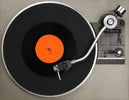
Tonearms
, by Haim Deutsch, 2 min reading time

, by Haim Deutsch, 2 min reading time
A tonearm can go wrong in a variety of ways. This can, obviously, have a major effect on your turntable’s ability to play your records and work effectively. The sound can be affected, the tonearm may scratch the record......
How to fix common tonearm problems
A tonearm can go wrong in a variety of ways. This can, obviously, have a major effect on your turntable’s ability to play your records and work effectively. The sound can be affected, the tonearm may scratch the record, it is not something you want to happen. Below are five common tonearm problems and how to fix them, if you can.
The tonearm swings to one side
This is most often caused by the fact that the platter is not level. Tonearms are usually extremely sensitive, so it is important to be as precise as possible when leveling the platter. If this doesn’t work, the issue could be with the tension of the wiring. If so, call a local professional and seek their help.
Tonearm won’t lower all the way
You may be finding that the tonearm isn’t lowering far enough to bring the stylus into proper contact with the record on the platter. This is usually because the tonearm bridge is not lowering enough when the cueing lever is used. There is usually an adjustment screw you can tweak which will adjust the bridge’s height, and in turn solve this issue in most cases.
The tonearm drops too fast
If the tonearm is lowering too fast, this can also be a symptom of an issue with the bridge, so try the bridge adjustment screw as a first quick check. If this doesn’t work, then the most probable cause is the damping capability of the cueing lever. A little perseverance with this fix will be required.
A cueing lever mechanism is lubricated with fluid that helps to control the drop of the tonearm, and over time this fluid can see its effectiveness degrade as it dries out and loses its viscosity. You’ll need to carefully apply some fresh cueing lever mechanism damping oil to the area. This isn’t a complicated process and is relatively straightforward, but the result will make the effort worthwhile.
The tonearm keeps returning
Some record players have a tonearm that automatically returns to its resting position after the record stops playing. These tend to be older “stacker” models, or the cheaper newer mass-produced models.
An issue with this style of record player sometimes arises whereby the arm returns to its resting position when it shouldn’t. A quick fix that often works is to manually rotate the platter with your hand for a few revolutions, until you hear a clicking sound. This will be the auto-return mechanism disengaging and/or resetting, and should solve the problem.
If this doesn’t fix it, check the model’s instruction manual to see if there is any mention of an auto-return adjustment screw.
Bouncing tonearm
If your tonearm is bouncing, it may be because of a few issues. If you’re manually lifting and lowering the tonearm, this may be causing a bit of a bounce when you release it. If your turntable has a cueing lever, you should use it and execute a smooth lifting action every time. Tonearms are delicate and sensitive mechanisms and what may not feel like a particularly rough movement can result in damage.